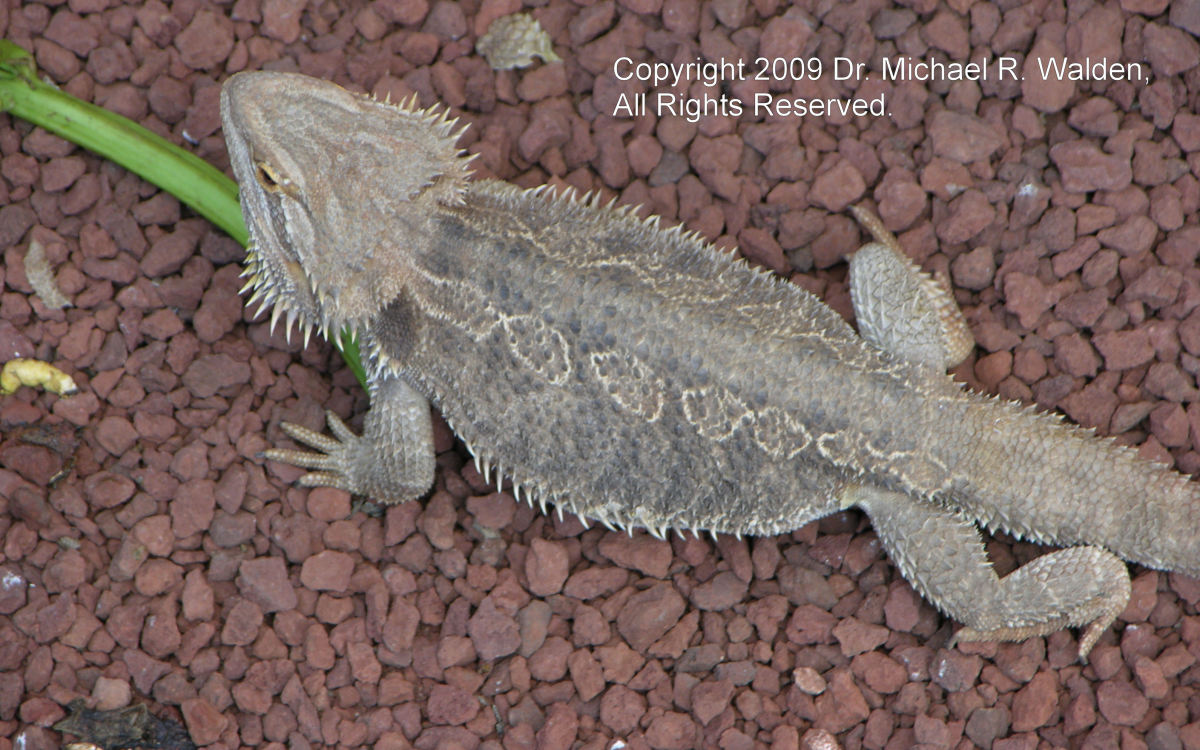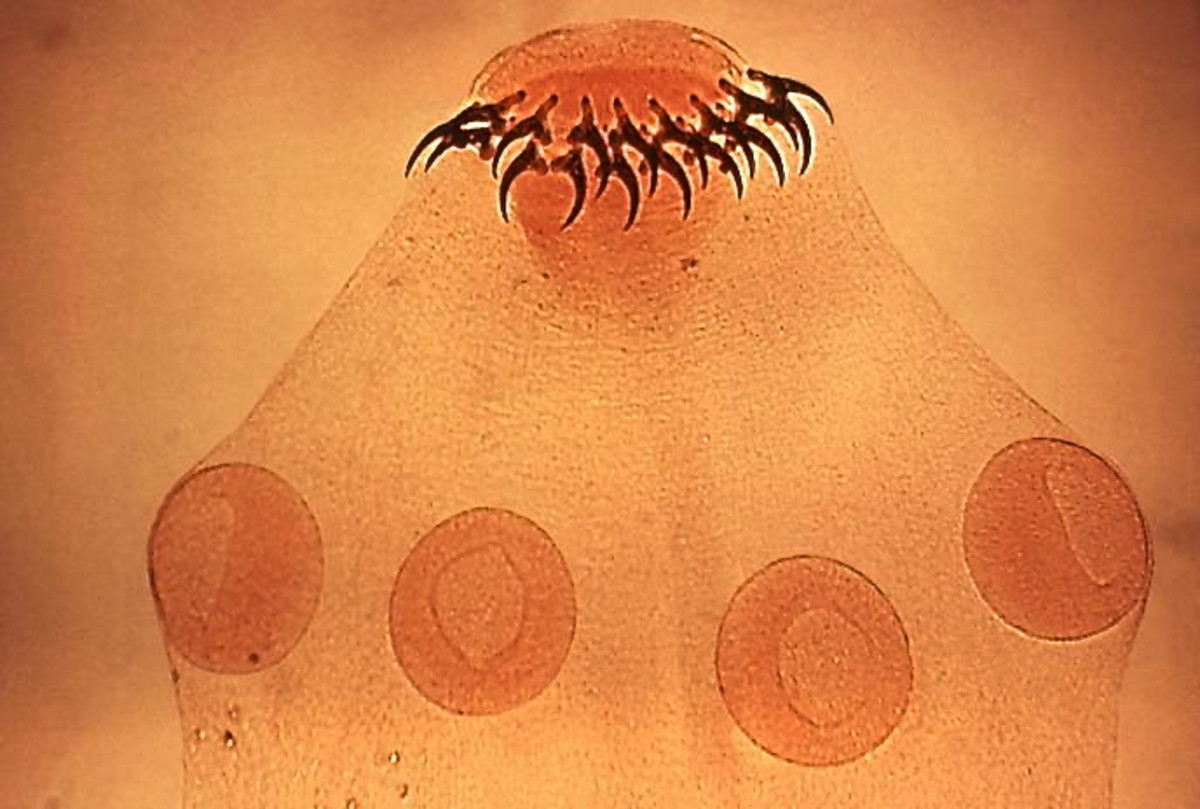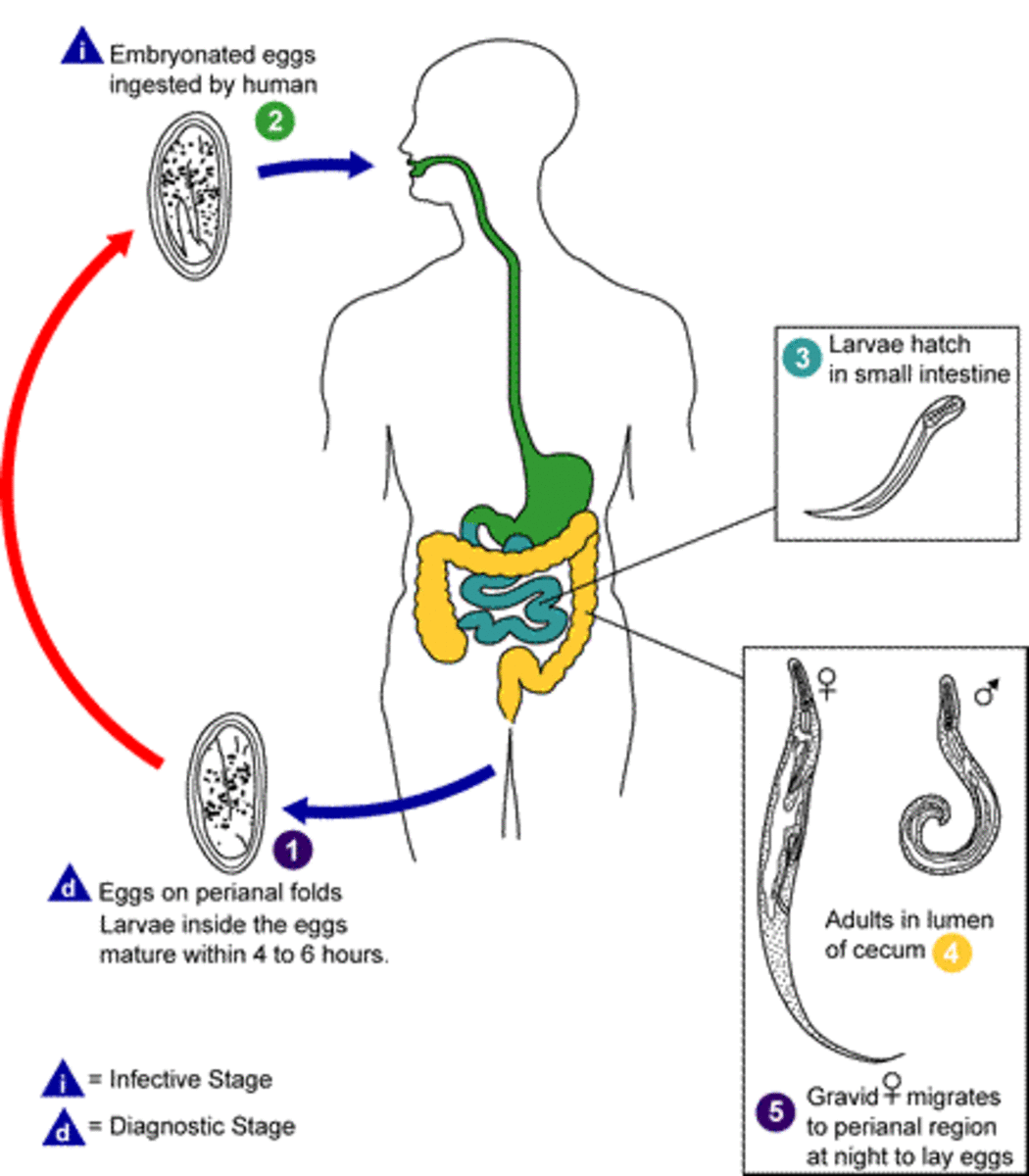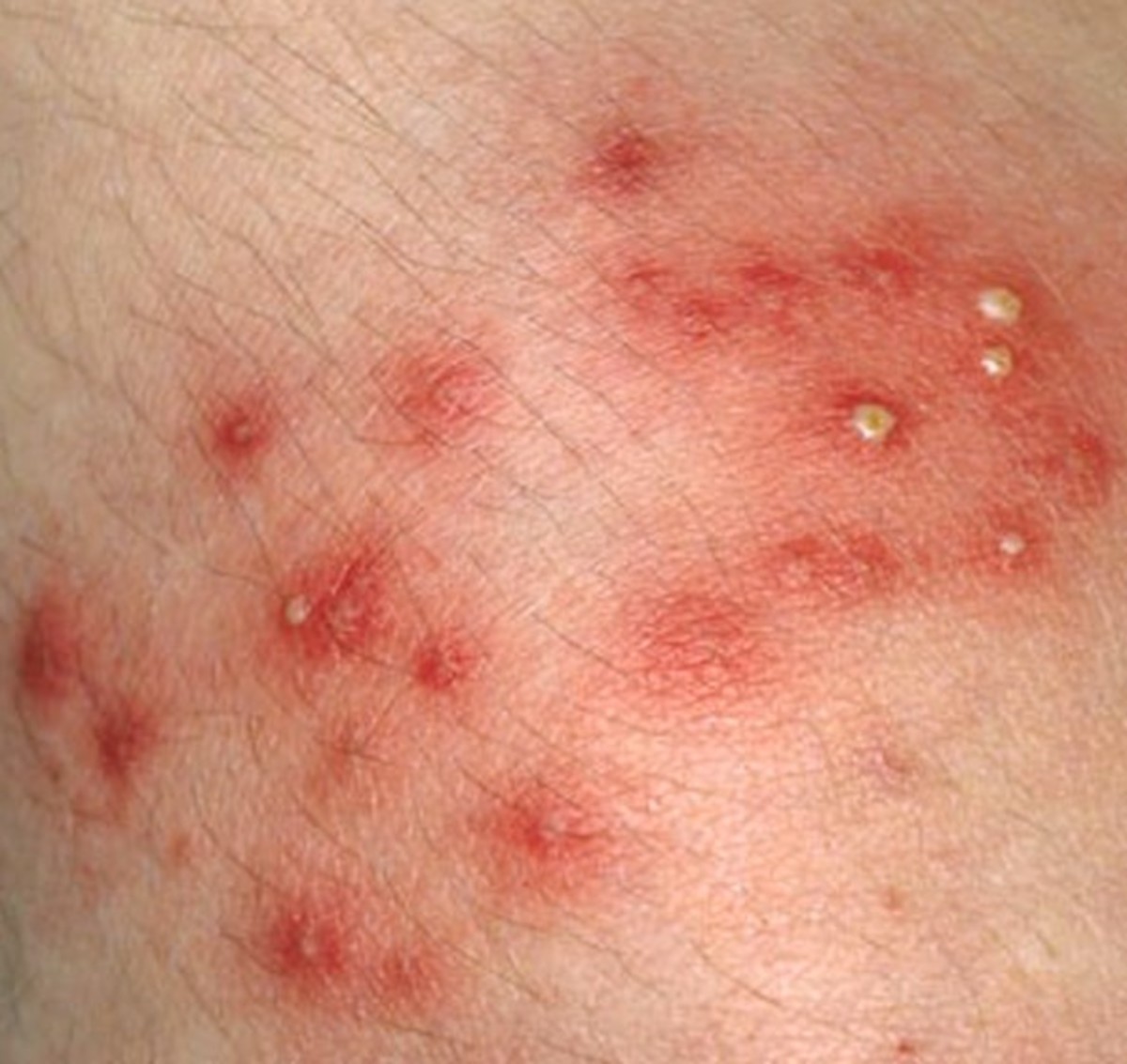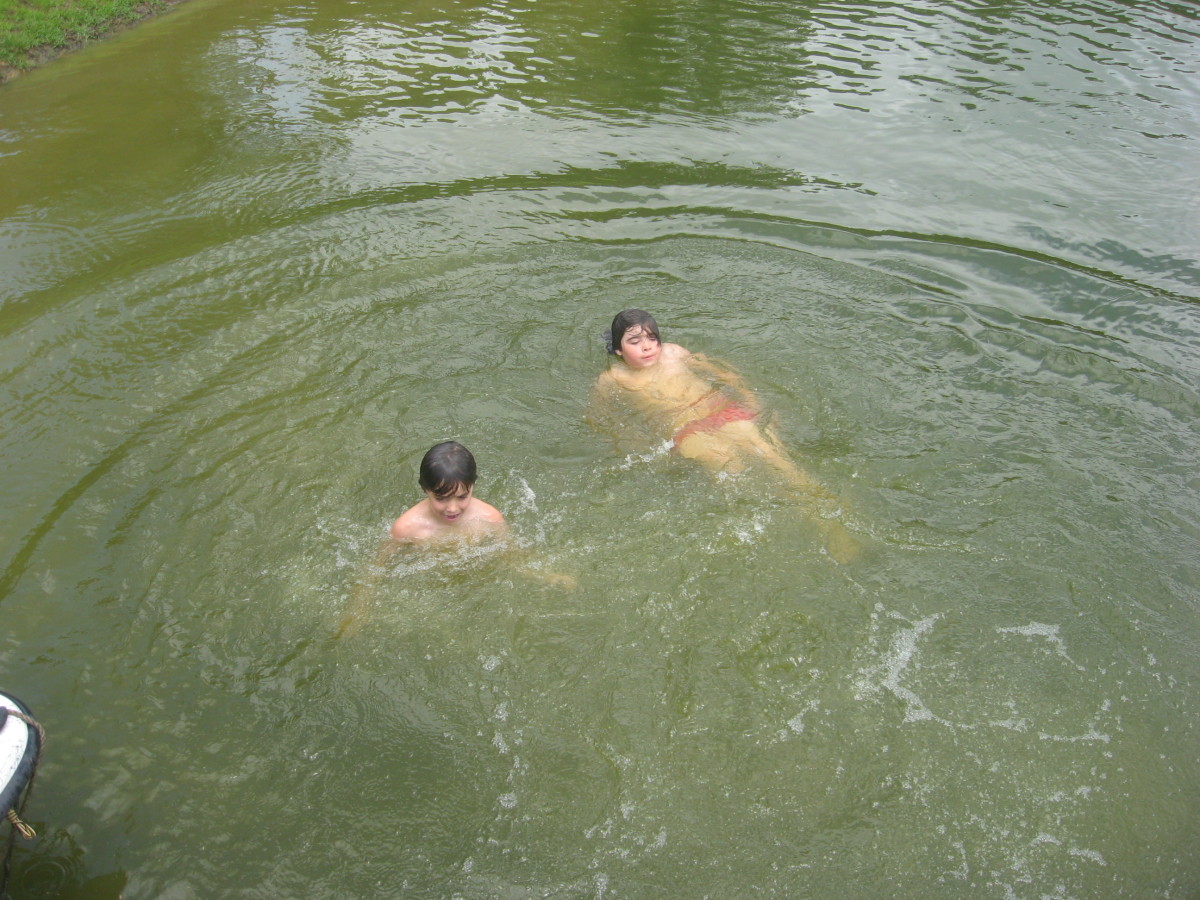3 Terrifying and Disgusting Parasites
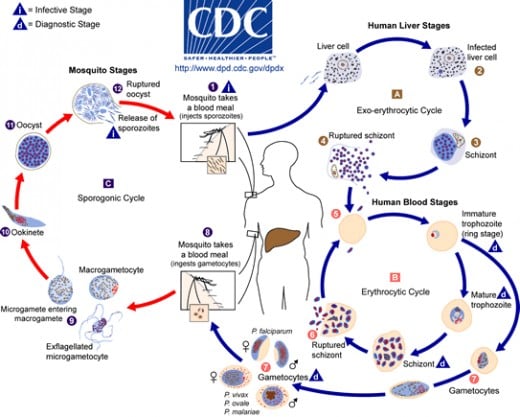
#3 Malaria
Our not-so-friendly neighborhood protozoan! Actually, Malaria is not the name of the parasite, but rather the name of the disease caused by four different species of the genus Plasmodium.
Before i continue, I would like to point out that Malaria was eradicated from the us in the 1950s and small outbreaks that people bring back from other countries have, so far, been controlled.
For such a small organism, it has a remarkably large life cycle (as seems to be the case with many parasites) and packs quite a punch on the human population, killing between one and three million people annually! It does so by hijacking red blood cells to multiply in, starving the body of oxygen.
Malaria cannot hijack sickle cells which is why people in malaria infested regions typically have a higher density of individuals with sickle cell syndrome. This syndrome can be beneficial to those who suffer from malaria, although it is usually an unwanted and life shortening human trait.
You may not be able to see this killer wriggling around with the naked eye but, as Alfred Hitchcock has proven to us many times over, fear of the unseen can be one of the most intense kinds of fear
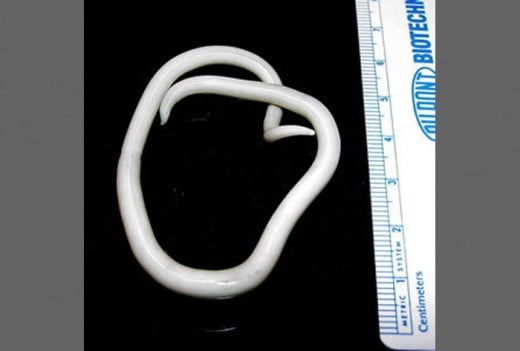
Ascaris Lumbricoides
Ascaris Lumbricoides is a parasitic round worm that infects the small intestines. It takes a lot to gross me out but this guy is one that takes the cake. I would not recommend looking for images about this unless you have a strong stomach (pun intended) and/or don't mind feeling queasy. Unlike our first parasite, this one is far less lethal but it is truly disgusting none the less!
Ascaris Lumbricoides worms are found world-wide and, like many parasites, it has a complicated life cycle. Ascaris Lumbricoides worms start their life as eggs. An infected animal or human will take a dump (yes I said that) on the ground, preferably on farm soil with fruits and vegetables all around. Here, the eggs, which are release with the load, are initially not infectious but become infectious after maturing in the soil. People then come by, hoping for a meal and eat the vegetables, ingesting the infectious Ascariasis eggs. The little guys then wriggle through the duodenum (First section of small intestine) and enter the blood stream where they will eventually land in the lungs. Here, they will live for a bit before getting coughed up and reswallowed. these worms are now mature enough to live and thrive in the small intestines where they can grow to be up to 49cm (19+ inches)!
Ascaris lumbricoides can be found wherever people are and, according to the cdc, it has infected between 807-1,221 million people worldwide!
As I mentioned before, these guys aren't usually fatal but they can (in extreme cases) cause intestinal blockages, bloody or wormy stool, intestinal pain, wormy vomit, etc. However, In most cases, there aren't any symptoms at all. Treatment includes a number of anti-parasitic drugs and, in extreme cases, surgery.
Our not-so-friendly neighborhood protozoan! Actually, Malaria is not the name of the parasite, but rather the name of the disease caused by four different species of the genus Plasmodium.
Before i continue, I would like to point out that Malaria was eradicated from the us in the 1950s and small outbreaks that people bring back from other countries have, so far, been controlled.
For such a small organism, it has a remarkably large life cycle (as seems to be the case with many parasites) and packs quite a punch on the human population, killing between one and three million people annually! It does so by hijacking red blood cells to multiply in, starving the body of oxygen.
Malaria cannot hijack sickle cells which is why people in malaria infested regions typically have a higher density of individuals with sickle cell syndrome. This syndrome can be beneficial to those who suffer from malaria, although it is usually an unwanted and life shortening human trait.
You may not be able to see this killer wriggling around with the naked eye but, as Alfred Hitchcock has proven to us many times over, fear of the unseen can be one of the most intense kinds of fear
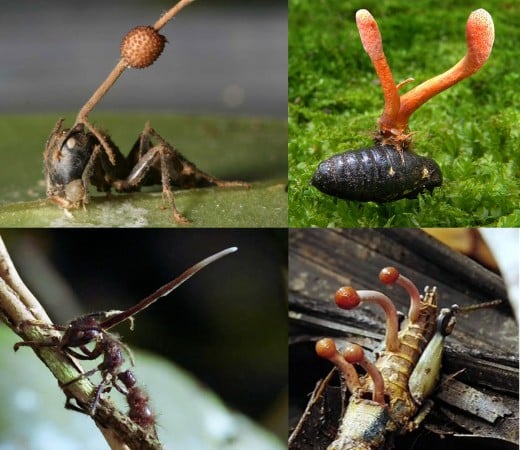
Cordyceps
Cordyceps is a parasitic fungus made famous by the award winning and truly astonishing game, the last of us. Although that game may be fictitious, Cordyceps is very much real. Corcyceps infects mostly insects and occasionally other mushrooms. It is terrifying in the fact that (in some species) it hijacks infected insects, controlling their behavior.
Cordyceps affects different insects differently. Cordyceps lloydii (lower right of picture) infects ants in the jungles of Costa Rica. Infected ants are compelled to climb as high as possible and cling firmly to whatever they are on before the fruiting body sprouts out of its head. The higher it gets, the farther the spores travel, and the more ants it can infect. Sometimes, ant colonies will recognize an infected ant, kill it, and take it far away from the colony so that there is no danger of infection. If an infected ant is not caught and the fruiting body of the fungus releases its spores, it has the potential to wipe out the entire colony.
Cordyceps senensis (recently renamed Ophiocordyceps senensis) is yet another mind altering fungus (pun intended) that infects the larvae of the ghost moth. Ophiocordyceps senensis makes the larvae dig to about a few centimeters under the ground surface and then makes the larva face upwards before killing it. It then sprouts out of the insect's head and emerges from the soil to spread its spores.
Ophiocordyceps Senensis has been used in traditional medicine for hundreds of years to aid in all manner of ailments from fatigue to heart disease.

Fun Fact:
Did you know that DDT, the insecticede that eradicated malaria from the USA was the primary cause of the endangerment of the balled eagle, America's most notorious emblem of freedom. Fish would eat poisoned insects and bald eagles would eat the fish, causing the eagle's egg shells to become thin and to crack under the slightest pressure. This is a prime example of how drastic the smallest problem can become if administered to the lower end of the food chain.

